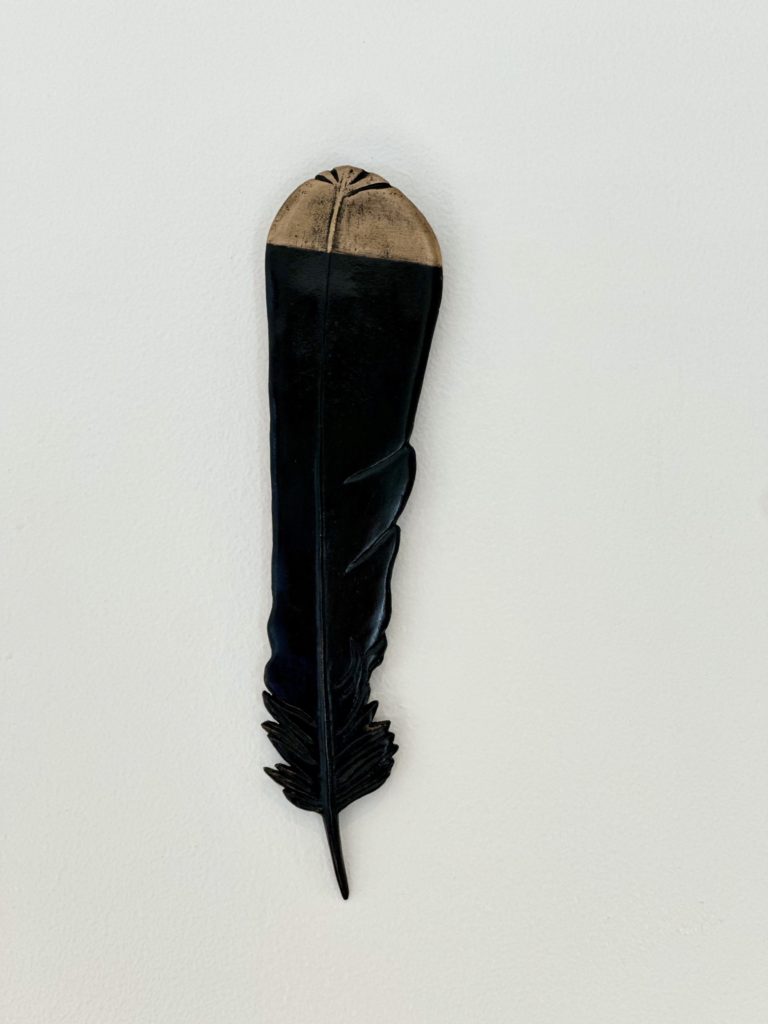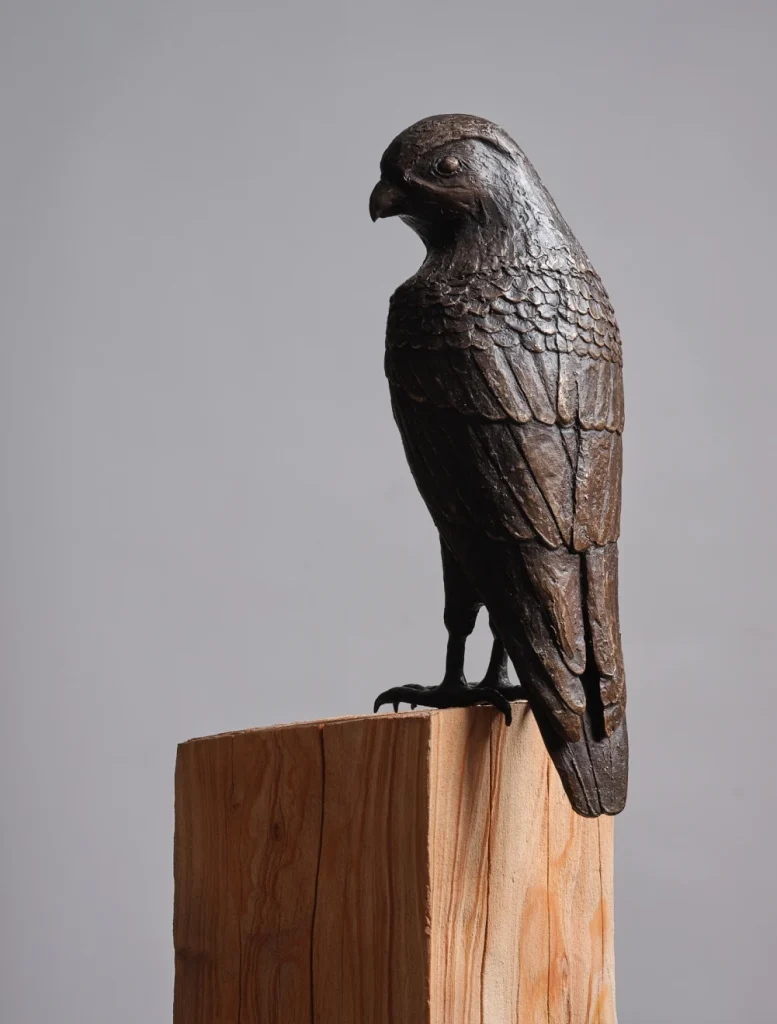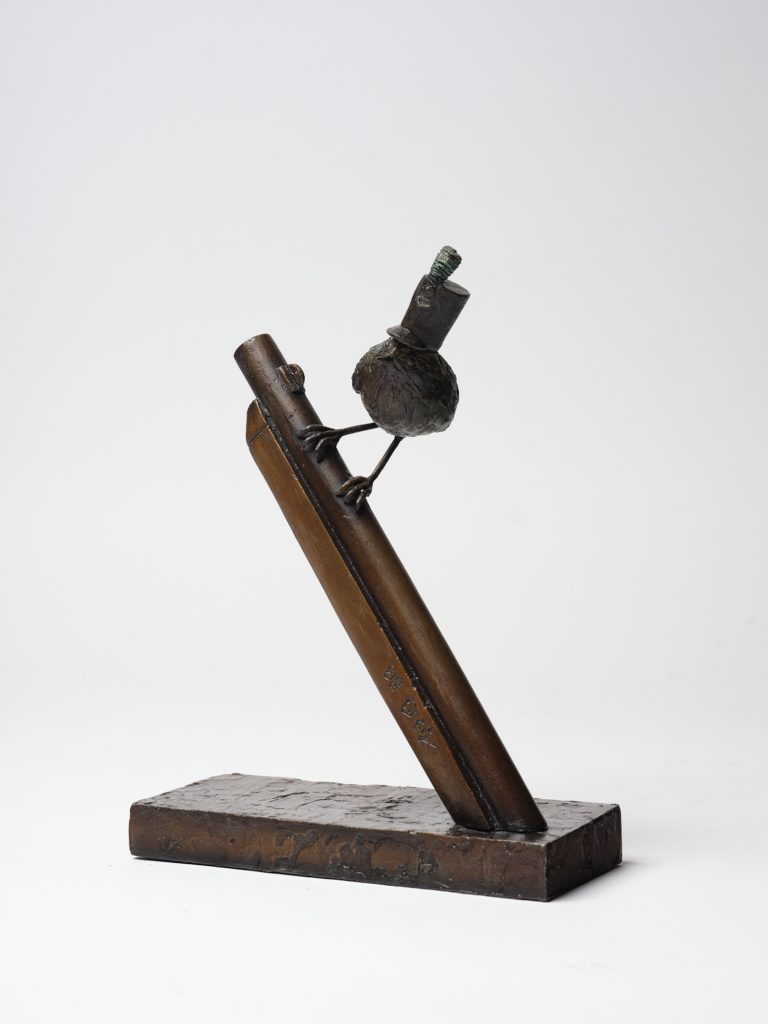Fiona Garlick
Born in England, Fiona Garlick lived in Kenya and Zimbabwe before immigrating to New Zealand in 1976. After 15 years based in the UK as a documentary producer and director, Fiona attended Falmouth College of Art where she made her first bronze medal The Wave. This work won the British Art Medal Society Student Award in 2005 and is held in the British Museum collection. In 2006 Fiona moved home to Auckland and graduated from Elam School of Fine Arts with a Bachelor of Fine Arts (with Honours).
Based in Arrowtown, where she has an open studio and gallery in historic Buckingham Street, Fiona’s focus as a sculptor is predominantly in bronze. Her work is mainly concerned with the environment, referencing the post colonial landscape and the tensions between introduced and native species of flora and fauna within New Zealand. New works cast a wry look at the naming of native birds by early European settlers.
Fiona is a regular exhibitor in outdoor sculpture shows including Stoneleigh Sculpture in the Gardens, NZ Sculpture on Shore, and Tai Tapu Sculpture Gardens. She currently has a work at Brick Bay Sculpture Trail. Represented by Artis Gallery in Auckland, her work is held in private collections throughout New Zealand and overseas.
Other links:
Artworks by Fiona Garlick
-

THE LOST ONES | HUIA FEATHER
See Artwork »THE LOST ONES | HUIA FEATHER
The lone Huia Feather represents the most famous songbird which has become extinct since human’s came to Aotearoa. There are 10 other lesser know songbirds in the group. From the Chatham Island Island Raven to the Pio Pio, to the tiny Bush Wren.
This is part of a larger installation THE LOST ONES | 54 FEATHERS which is a work in progress. The work is intended as a wall installation and has metal pins on the back to go into the wall.
-

THE LOST ONES | SONGBIRDS
See Artwork »THE LOST ONES | SONG BIRDS
11 pieces (various sizes)
Dimensions as installed.
cast bronze
The work represents the 11 birds from the Passeriformes (songbirds) order which have become extinct since humans came to New Zealand. The most famous is the Huia, but there are 10 other lesser known songbirds in the group. From the Chatham Island Raven, to the PioPio, to the tiny Bush Wren. Designed as a wall installation each feather has a metal pin on the back which goes directly into the wall.
-

SENTINEL II
See Artwork »SENTINEL II
Cast bronze, macrocarpa, metal stand
Edition AP
The Karearea (New Zealand Falcon), is watching and waiting patiently to pounce. Mounted on a sandblasted macrocarpa post, this sculpture can work well inside or outside.
-

RIFLEMAN
See Artwork »RIFLEMAN
Cast bronze
Ed 6/7
Rifleman is part of a series of works taking a wry look at the nicknames given to New Zealand birds by the early European settlers.
Titipounamu was named the rifleman because its green plumage was the same colour as the uniform of a colonial New Zealand regiment. Here the diminutive bird wears the plumed hat of the Rifleman regiment and sits on the barrel of a Baker rifle.
-

PARSON BIRD
See Artwork »Bronze on bluestone plinth
Ed 4/7
plinth dimensions 19 x 100cmParson Bird is part of a series of works taking a wry look at the nicknames given to New Zealand birds by the early European settlers. The tuft of feathers at the tūī’s throat reminded settlers of the white collar of a minister or parson. Its raucous, sometimes pompous demeanour evoking an enthusiastic sermon. Here the tūī’ delivers his sermon from a giant bible on a precarious lectern.